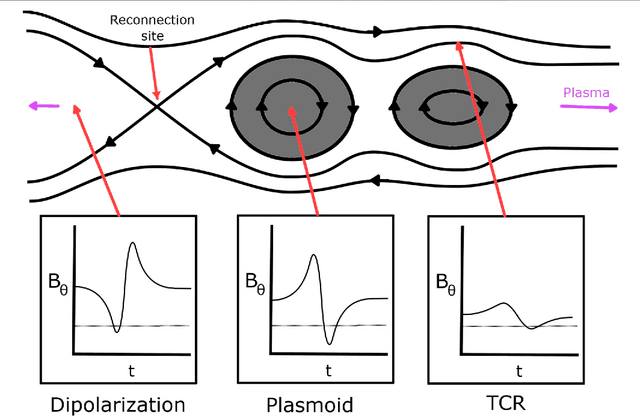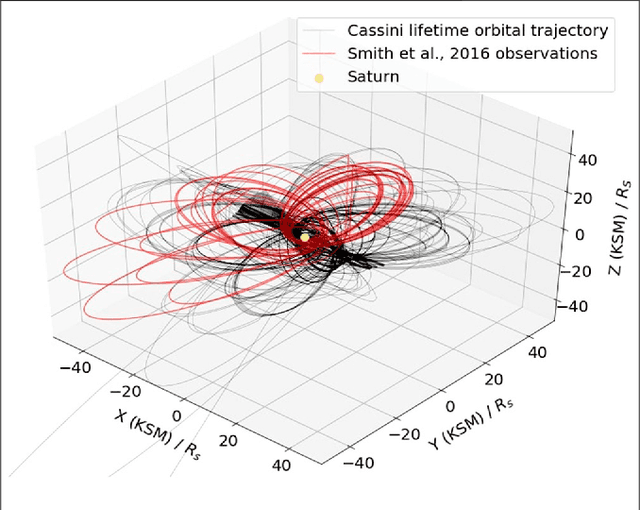Tadhg M. Garton
Machine Learning Applications to Kronian Magnetospheric Reconnection Classification
Apr 01, 2021



Abstract:The products of magnetic reconnection in Saturn's magnetotail are identified in magnetometer observations primarily through characteristic deviations in the north-south component of the magnetic field. These magnetic deflections are caused by travelling plasma structures created during reconnection rapidly passing over the observing spacecraft. Identification of these signatures have long been performed by eye, and more recently through semi-automated methods, however these methods are often limited through a required human verification step. Here, we present a fully automated, supervised learning, feed forward neural network model to identify evidence of reconnection in the Kronian magnetosphere with the three magnetic field components observed by the Cassini spacecraft in Kronocentric radial-theta-phi (KRTP) coordinates as input. This model is constructed from a catalogue of reconnection events which covers three years of observations with a total of 2093 classified events, categorized into plasmoids, travelling compression regions and dipolarizations. This neural network model is capable of rapidly identifying reconnection events in large time-span Cassini datasets, tested against the full year 2010 with a high level of accuracy (87%), true skill score (0.76), and Heidke skill score (0.73). From this model, a full cataloguing and examination of magnetic reconnection events in the Kronian magnetosphere across Cassini's near Saturn lifetime is now possible.
* 21 pages, 9 figures
Integrating Machine Learning for Planetary Science: Perspectives for the Next Decade
Jul 29, 2020


Abstract:Machine learning (ML) methods can expand our ability to construct, and draw insight from large datasets. Despite the increasing volume of planetary observations, our field has seen few applications of ML in comparison to other sciences. To support these methods, we propose ten recommendations for bolstering a data-rich future in planetary science.
 Add to Chrome
Add to Chrome Add to Firefox
Add to Firefox Add to Edge
Add to Edge